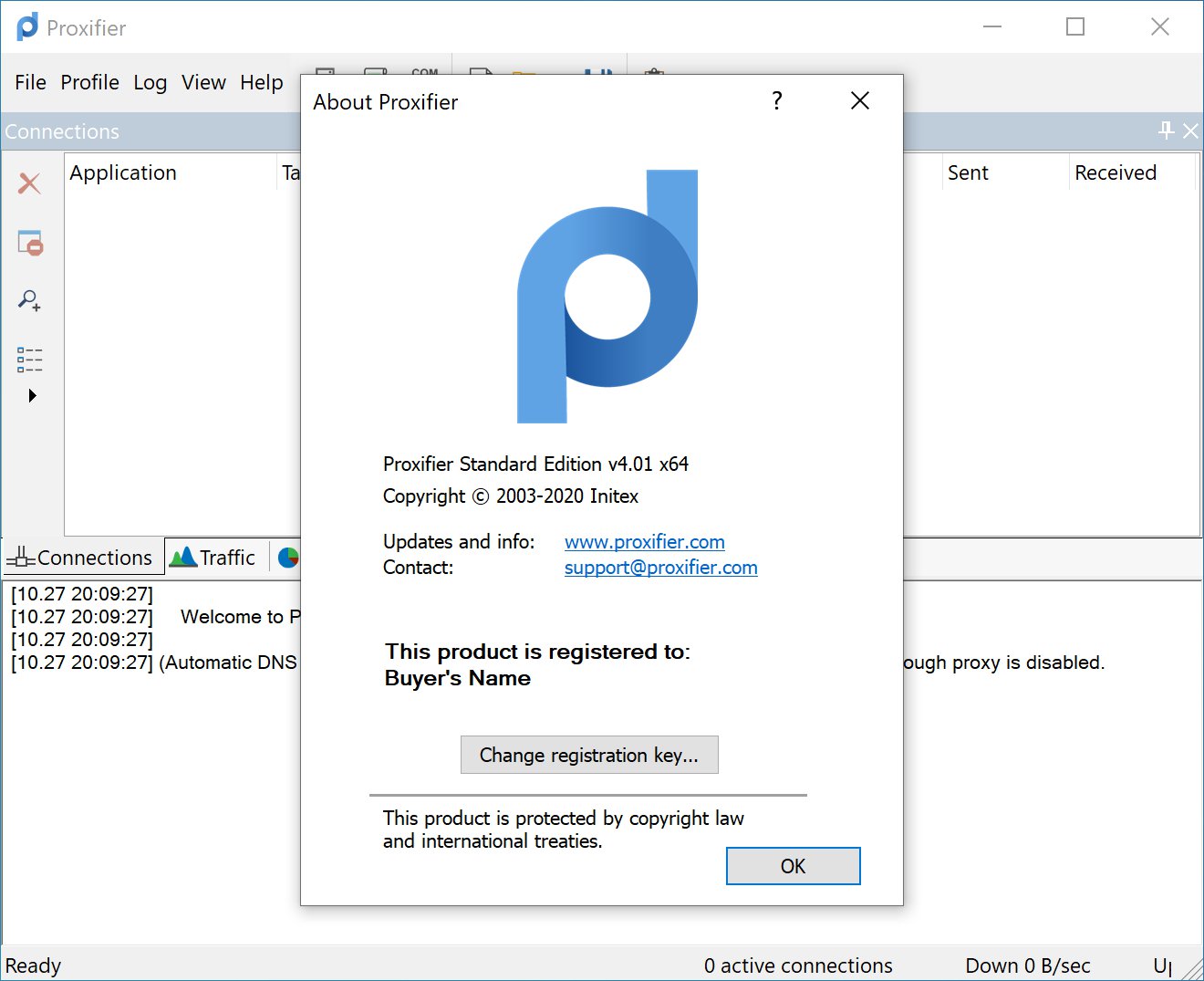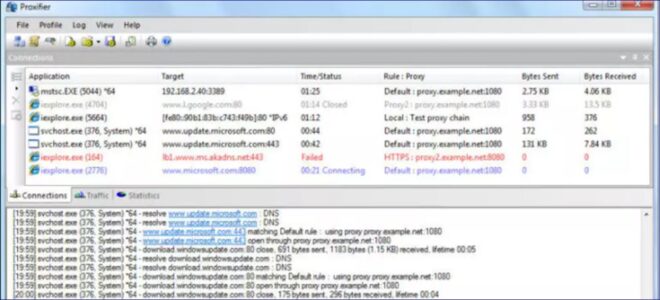

- PROXIFIER STANDARD EDITION V3.29 REGISTRATION KEY LICENSE KEY
- PROXIFIER STANDARD EDITION V3.29 REGISTRATION KEY INSTALL
- PROXIFIER STANDARD EDITION V3.29 REGISTRATION KEY DRIVER
- PROXIFIER STANDARD EDITION V3.29 REGISTRATION KEY PORTABLE
Normally, the driver is installed during Proxifier installation by the setup program ( ProxifierSetup.exe), and it is located in the Driver folder of the target installation folder (usually C:\Program Files (x86)\Proxifier\Driver). All other Proxifier files, including Proxifier.exe, can be copied and run from arbitrary locations. Only an administrator can install, uninstall, start, or stop the driver. Proxifier Standard Edition v4 uses a Windows Filtering Platform (WFP) callout driver to intercept network connections. Use the HKEY_LOCAL_MACHINE hive for system-wide registration.

You will need to add two string (REG_SZ) values: HKEY_CURRENT_USER\Software\Initex\Proxifier\License
PROXIFIER STANDARD EDITION V3.29 REGISTRATION KEY LICENSE KEY
Proxifier’s license key can be deployed using the following path of the system registry.

To deploy a profile for all users on the machine, please put Default.ppx in Proxifier’s home directory or at C:\ProgramData\Proxifier\įor more information, please see the Profiles topic. Files with other names will be available under Proxifier’s File -> Load Profile menu. On start-up after a fresh installation, Proxifier will load Default.ppx from this path. C:\Users\\AppData\Roaming\Proxifier4\Profiles Users can copy predefined profiles to the following path on the target machine for the target user. Proxifier configuration can be deployed as a Proxifier profile file (*.ppx). This mode is useful in unattended and remote deployment scenarios.
PROXIFIER STANDARD EDITION V3.29 REGISTRATION KEY INSTALL
To install Proxifier silently (without user interactions), use the /SILENT or /VERYSILENT command line parameter for ProxifierSetup.exe.
PROXIFIER STANDARD EDITION V3.29 REGISTRATION KEY PORTABLE
Proxifier Portable Edition can simply be copied as a folder from a. To install Proxifier on the target machine, please run this file as an administrator. Proxifier Standard Edition is distributed as a single ProxifierSetup.exe file containing all Proxifier files and the setup program. Provides detailed reports for network errors.Proxifier Editions Installation and Driver Standard Edition only

Creates logs for incoming/outgoing traffic. Displays info on current connections and real-time colored diagrams for bandwidth usage. HTTP proxy has NTLM authentication enabled. Chains of proxy servers will use various protocols. Allows you to hide your IP address and benefit from secure privacy. Flexible Proxification Rules are available. DNS names can be resolved through a proxy server. Proxifier can force all network connections present in the system to operate through a proxy server (tunneling). Supports SOCKS v4, SOCKS v5, and HTTP proxy servers. Allows you to connect to restricted ports as a result of bypassing firewall restrictions. Connect to the Internet from restricted LAN through a proxy server gateway. The software allows you to run any network application through proxy server, with no need for additional configurations. You can also benefit from secure e-mailing through a proxy server or a chain of proxy servers when using any e-mail client, including Outlook, Eudora, Netscape and others. Proxifier supports a large number of Internet clients, such as browsers, ftp, ICQ, IRC, Kazaa, telnet, ssh, video/audio, games and others, for networks separated from Internet by a firewall. Moreover, Proxifier provides a larger degree of control over network security and additional network functionality. Proxifier resolves this issue, and bypasses firewalls, tunnel connections through HTTP and SOCKS proxy servers. Network applications that were not developed to work through proxy servers and as a result cannot be used from local area networks or with firewalls can compromise corporate privacy and impose many other restrictions. Proxifier is a program designed to enable network applications that lack support for working through proxy servers, function through a SOCKS or HTTP proxy server, or a chain of proxy servers. Proxifier: Operate through proxy servers or chains


 0 kommentar(er)
0 kommentar(er)
